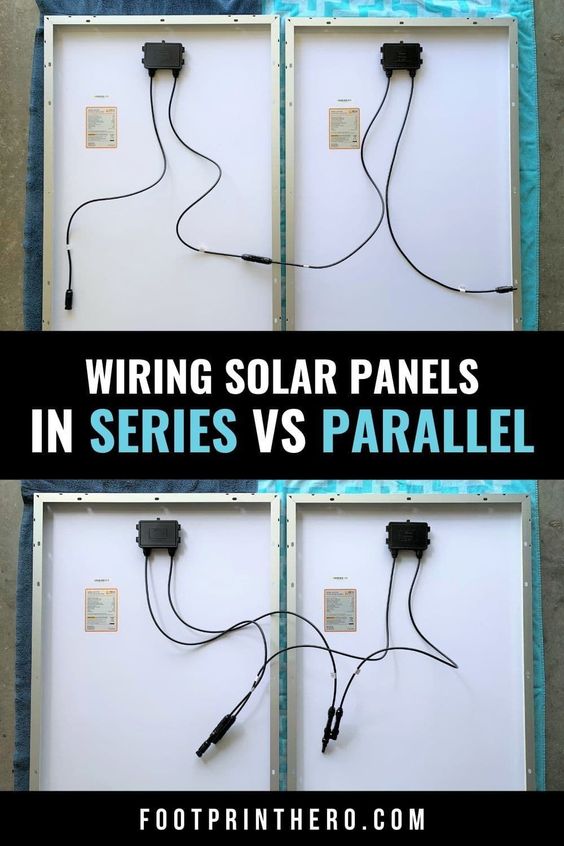Solar panels are a key component of any solar power system, and how they are wired up can have a big impact on the efficiency and performance of the system. Wiring up solar panels in series or parallel can help to increase the voltage or current output of the system, respectively. In this article, we will go over the steps on how to wire up solar panels in series and parallel, and discuss the pros and cons of each method.
Wiring Solar Panels in Series
Wiring solar panels in series involves connecting the positive terminal of one panel to the negative terminal of the next panel, and so on. This results in a higher voltage output, which is ideal for systems that require a higher voltage, such as grid-tied systems. Here are the steps to follow:
- Connect the positive terminal of the first solar panel to the negative terminal of the second panel using a solar panel connector cable.
- Connect the positive terminal of the second panel to the negative terminal of the third panel, and so on, until all panels are connected in series.
- Connect the remaining positive and negative terminals to the solar charge controller.
Pros:
- Higher voltage output for better efficiency
- Requires fewer wires and connections
- Easier to install and maintain
Cons:
- Lower current output
- Vulnerable to shading and mismatched panels, as the output of the entire string is limited to the output of the lowest-performing panel.
Wiring Solar Panels in Parallel
Wiring solar panels in parallel involves connecting the positive terminals of all panels together and the negative terminals together. This results in a higher current output, which is ideal for off-grid systems that require a higher current to charge batteries. Here are the steps to follow:
- Connect the positive terminals of all solar panels together using a solar panel connector cable.
- Connect the negative terminals of all panels together using a solar panel connector cable.
- Connect the positive and negative terminals to the solar charge controller.
Pros:
- Higher current output for better battery charging
- Not vulnerable to shading and mismatched panels
- Allows for flexibility in system design and expansion
Cons:
- Lower voltage output
- Requires more wires and connections
- More difficult to install and maintain
Conclusion Wiring solar panels in series or parallel can help to increase the voltage or current output of a solar power system, respectively. Each method has its own pros and cons, and the choice will depend on the specific needs and requirements of the system. By following the steps outlined in this article, you can successfully wire up your solar panels to optimize the performance of your solar power system.
Instructions:
- Enter the total energy consumption per day in watt-hours. This can be obtained from your utility bill or by using a power meter.
- Enter the average daily hours of sunlight in your area. This information can be obtained from the National Renewable Energy Laboratory (NREL) website or a local solar energy provider.
- Enter the solar panel wattage in watts. This information can be found on the solar panel manufacturer’s website or label.
The calculator will then calculate the number of solar panels needed and the total output in watts. Here is the formula used to calculate the number of solar panels needed:
Number of solar panels = Total energy consumption per day / (Solar panel wattage x Average daily hours of sunlight)
And here is the formula used to calculate the total output in watts:
Total output = Number of solar panels x Solar panel wattage
Note that this is a simple calculator and does not take into account factors such as shading, panel efficiency, and temperature. It is always recommended to consult a solar energy professional for a more accurate assessment of your solar power needs.

